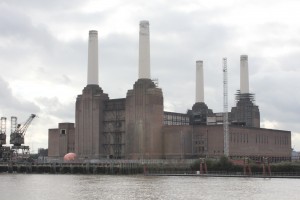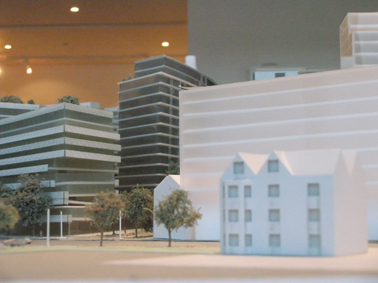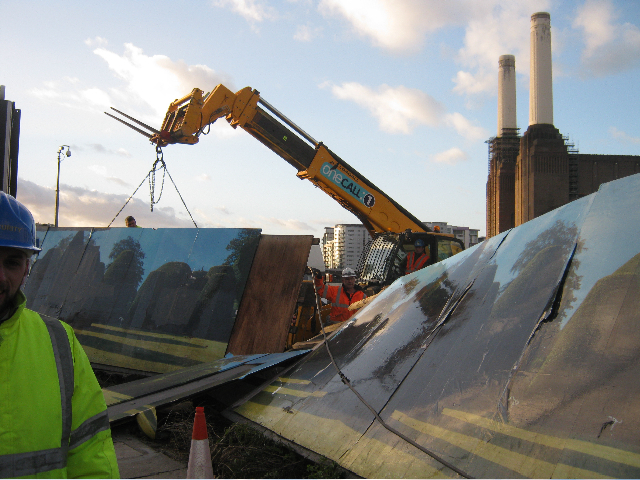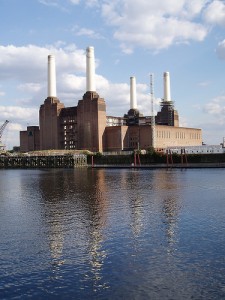The first of Battersea Power Station’s emblematic cream chimneys is likely to be demolished this month by its current owners, the Battersea Power Station Development Company (BPSDC), which is part of the Sime Darby consortium. The company claims its intention is to replace the chimneys – which it says are beyond repair (despite evidence to the contrary) – with identical replicas. However both John Broome’s precedent and discrepancies between the company’s reasoning and its actions suggest this might never happen, as, of course, does the commercial potential of the site, without the power station sitting awkwardly in the centre of it.
Footage shows Robert Tincknell, Chief Executive Officer of Battersea Power Station Development Company, insisting that the chimneys have “structurally failed” and that “big chunks are falling off”. However the company continues to lease the site for public events, including Everyman Cinema film screenings and ‘Street Feasts’, held in the shadow of the chimneys Tincknell says are disintegrating. Event-goers have not been told to wear hard hats or other protective gear, but perhaps this is because these things would be useless in the event that an entire chimney is brought down by high wind, as Richard Barrett, an Irish property investor who co-owned Battersea Power Station before it was bought by the Sime Darby consortium, has previously suggested may happen at any time.
The Sime Darby consortium – which has been accused of exploiting the local community at their oil palm plantation in Liberia – have so far put up only £11 million of bond money to guarantee the replacement of the chimneys, a woefully small sum, and one suggested by their own employee, Philip Gullet, Chief Operating Officer at Battersea Power Station Development Company. In addition to this the bond money has been deposited into an account with Malaysian bank CIMB, making it more difficult for Wandsworth Council and English Heritage to access it in the event that Battersea Power Station Development Company default. According to campaigners, it is imperative to its retrieval that the bond money is moved to a British bank account.
In response to these criticisms, Battersea Power Station Development Company have agreed to a meagre compromise; they will demolish one chimney to begin with and must partially rebuild this before they can demolish the other three. This is still flouting the Council’s original rules, which said that the chimneys must be demolished one at a time.
Campaigners believe that partially rebuilding one tower is not enough to guarantee the completion of four new chimneys. They suggest that Battersea Power Station Development Company are clearing the site little by little and point to the fact that, despite owning a vast swathe of riverfront, Battersea Power Station Development Company have removed the power station’s listed cranes purportedly to allow the chimney rubble to be removed by boat. There are concerns that the cranes won’t be brought back, and some consider their removal to be further evidence that Sime Darby have no intention of actually renovating the power station.
However, in an unusually considerate move,Battersea Power Station Development Company have at least set up a helpline number, for those traumatised by the sight of the maimed power station scarring the skyline, perhaps during their daily commute.
Our short video comments on the discrepancy between the developer’s claim that the chimneys are rapidly disintegrating, and their actions in allowing public events to take place on site, directly below the “structurally failed” chimneys. It also includes the helpline number, in case you feel personally disturbed by the destruction of Battersea Power Station.
Click Battersea Power Station for more blogs
See our Battersea Power Station project pages for more information and videos.
Or visit PlanA our general blog on urbanism, planning and architecture.
Spectacle homepage
Like Spectacle Documentaries on Facebook
Follow SpectacleMedia on Twitter






